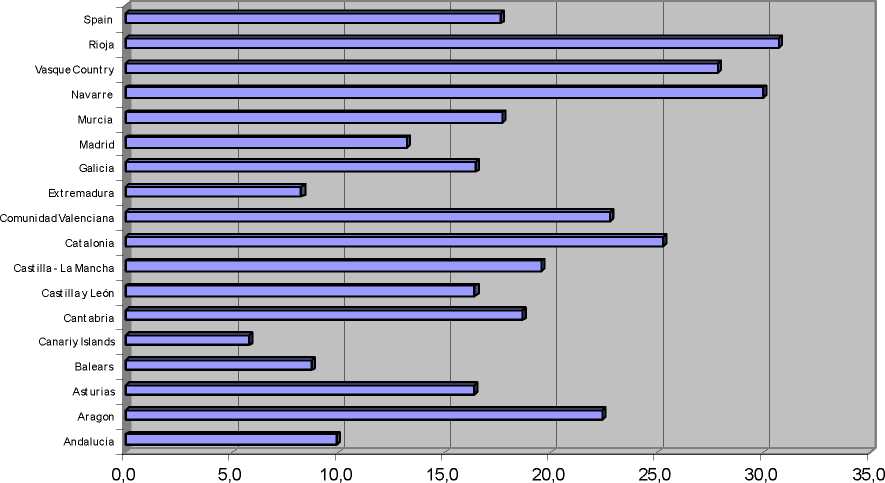Small firms represent two thirds of Spanish industrial employment, and very important shares
in all regions. But distributional differences are also significant. Three of the most
industrialised regions, as we will see in next Figures, Catalonia, the Vasque Country and
Navarre, along with Madrid, Asturias and Cantabria, have shares of small firms participation
below the national mean; on the contrary, the less industrialised regions, Andalucia, Castilla-
La Mancha, and, above all, Extremadura, joined by an industralised region, La Rioja, show
very high small firms percentages.
Figure 2.- Share of Industrial Employment. 2002.

Spanish regions could be divided into three groups depending on the relevance of industry on
their employment structure: Group I could be called “industrialised regions”, where more than
twenty per cent of the employees of the region worked in 2002 on the industrial sector: La
Rioja, Navarre, the Vasque Country, Catalonia, Aragon, and Comunidad Valenciana belong
to this group. Group II, called “semindustrialised regions”, would be integrated by those
regions where the industrial employment is around the national mean (17.6%): Castilla-La
Mancha, Cantabria, Castilla y Leon, Murcia, Galicia, and Asturias, conform this group.
Finally, Group III, the “less industrialised regions”, is composed by those regions where the
industrial employment is around 10 % of total employment of the region: Andalucia and
Extremadura. Three communitties present special characteristics in order to be classiffied:
More intriguing information
1. The name is absent2. The name is absent
3. New issues in Indian macro policy.
4. The name is absent
5. The name is absent
6. The Clustering of Financial Services in London*
7. The name is absent
8. How Offshoring Can Affect the Industries’ Skill Composition
9. Strategic Policy Options to Improve Irrigation Water Allocation Efficiency: Analysis on Egypt and Morocco
10. Change in firm population and spatial variations: The case of Turkey